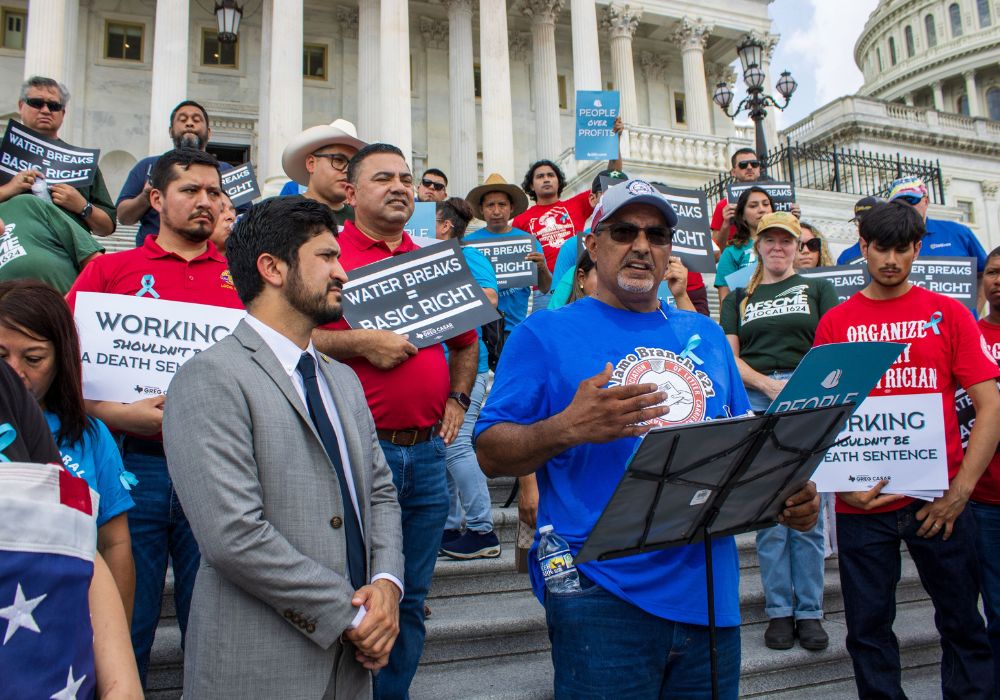The heatwave enveloping much of the world is so deadly that, in Europe, it has acquired two hellish mythical names: Cerberus, the three-headed dog that guards Hades, and Charon, the man who, legend has it, ferries the dead to the afterlife.
Workers are taking a stand against the brutal conditions, using walkouts, strikes, and protests to call attention to the outsize danger the heat poses to the people who must work outdoors or in conditions where air conditioning isn’t available. The ongoing threat has taken the lives of people, from a construction worker in the Italian city of Lodi to farmworkers in Florida, and letter carriers in Texas.
The organizing efforts started in Greece, where workers in the tourism industry — which accounts for 20% of the country’s GDP — are chafing under the strain. Athens’s most famous archaeological site, the Acropolis, closed for a few days earlier this month, but even as the government reopened it, temperatures continued soaring to 111 degrees Fahrenheit. The Acropolis’s staff, which is unionized through the Panhellenic Union for the Guarding of Antiquities voted to strike during the hottest four hours of each day.
Workers are fed up in Italy, too. Bus drivers have threatened to bring Rome and Naples to a halt, citing oven-like heat and the lack of air conditioning in their vehicles. Even the employees of a McDonald’s staged a walkout, also citing lack of A/C, which most of the country’s restaurant kitchens lack, according to the Italian General Confederation of Labor.
In the U.S., the heat has prompted strikes by Amazon delivery drivers, and Union of Southern Service Workers members in Atlanta rallied for relief after a Burger King refused to fix its broken air conditioning. Currently, the United States relies on employers to enforce heat safety guidelines, and many do not appear interested in doing so — some agricultural and construction companies even going so far as to actively oppose federal heat regulations. Some say it’s counterproductive to do so, as research shows that working under extreme heat yields diminishing returns – after a certain point, workers’ minds and bodies become impaired, and research has shown the cumulative impact of working in extreme heat is costing the U.S. billions in worker productivity.
OSHA started the rulemaking process for a workplace standard on heat exposure in 2021, but there’s still no firm rule in place. Calls for one have ramped up of late, and the Biden administration responded with the nation’s first-ever heat hazard alert and investments in more accurate weather forecasting, among other measures.
Labor organizations, though, are holding firm in their demand for stronger heat protections. Organizers and workers in Texas are particularly concerned that the state has taken a sharp and deadly turn. A new law strips cities of the right to maintain independent worker safety ordinances such as mandating breaks. The bill, which takes effect September 1, will leave many of those decisions to employers, and many workers don’t trust them to operate in good faith.
“As a single mother who depended on construction work for 20 years to run a household alone, I have witnessed how each summer becomes more perilous for my co-workers,” said Marisol Gayosso, a member of Workers Defense Project who lives in Dallas. “Workers are dying in 100-plus degree weather and the brutality of the climate crisis will only exasperate this reality.”
In response to the bill, organized labor and environmental groups, in concert with Texas House Rep. Greg Casar, rallied on July 25 on the front steps of the Capitol building in Washington, D.C. to demand a federal heat standard for U.S. workers. The coalition included workers, members, and staff from United Farmworkers, the Texas AFL-CIO, the Sunrise Movement, and other organizations.
The event was preceded by a public letter, released on July 24 and signed by Casar and 110 colleagues. In it, House lawmakers called on the Occupational Safety and Health Administration to develop a federal safety standard for heat exposure, arguing that it would require employers and states to comply with safety measures like providing regular breaks and ample water and shade.
Casar, who was previously an organizer with the Workers Defense Project, billed the action as a “thirst strike,” refusing to drink water, eat, or take a break for the entire day.
Ana Gonzales, the Texas AFL-CIO’s deputy director of politics, says that union membership is what has enabled workers from continent to continent to stand up and walk out, but she fights for non-unionized workers, too.
“If you are part of a union,” she said, “you will get those breaks. Those breaks are in your contract. But for those workers that don’t have unions, we will continue to find ways to protect them.”
This article originally appeared in Grist at https://grist.org/extreme-heat/as-heat-strikes-so-do-workers/.
Grist is a nonprofit, independent media organization dedicated to telling stories of climate solutions and a just future. Learn more at Grist.org







